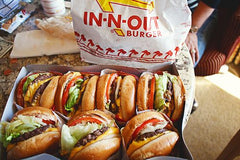No Products in the Cart

There are various methods to abide by when looking to lose weight or gain muscle. Often the question is, “Which one is the right one?” The most important factor in achieving your goals is to find what best suits YOU. The truth is, all diets work; however, it is important to find the diet you are able to follow to ensure you stay consistent. In this article we will discuss the flexible dieting method.
Flexible dieting allows you to eat foods you enjoy, while staying within your macros to attain your goals. It does not exclude any food categories, hence the name ‘flexible’. The most important factor lies within the set macros you are to consume per day. Once you have calculated what your macros/calories are for your specific goal, then your methods of eating can be implemented.
These are the nutrients that comprise the calorie content within food. This will be essential when determining energy expenditure, energy in vs energy out. The 3 Macronutrients are: Carbohydrates, Fats, and Proteins. These three nutrients will provide the body with calories that are essential for your body to function. Once you have determined your total daily energy expenditure: Your basal metabolic rate (what your body needs to stay alive), daily level of activity, non-exercise activity, and thermic effect of food. Determining macros will reflect how you feel during your workouts. First, determine your calorie goal and from there breakdown the macros to ensure you do not feel depleted but rather energized for your training days.
This is the macro nutrient that will ensure you are retaining the muscle you are building especially when in a calorie deficit (lower calories for weight loss) and will increase levels of satiety. This will prevent one from exceeding daily calories. Protein also has three times the thermogenic effect energy than carbohydrates and four times more than fats. This simply means that you are burning more calories by eating protein in comparison to carbs and fats.
This is the macronutrient the body prefers to use as an energy source and should NOT be eliminated!! This is the first macronutrient the body will utilize first.
Fats are the macronutrient responsible for building DHEA, testosterone, and estrogen. It is important to ensure this macronutrient is met as it allows our bodies to make good cholesterol which allows our sex hormones to be synthesized.
The best way I adhere to my goals is by planning my meals before the day begins. With flexible dieting, one has the ability to manipulate meals and continue to adhere to a goal, if the meals fit the set macros. A tool I use when going out is ‘My Fitness Pal,’ a free app that has generalized estimates of macros breakdowns/nutrition facts of food. A built-in barcode scanner within the app, makes for a convenient entry when the packaging is available. The verified check on the food item listed ensures accuracy. The ingredients immediately are displayed and the macros are calculated, ready to be incorporated in the daily log. Many restaurants can be found on the app, which makes dining out a possibility when tracking. Although most meals found in restaurants that are not listed will be a rough estimation, having an idea of what you are eating is a good way to stay accountable.
I log my intended meals on ‘MFP’ before the day begins. Before I dine out, I search the restaurant on ‘MFP’ or log what I plan to eat at the restaurant by searching the menu. If you find yourself the next day wanting to deviate from the prepped log, input what you would rather eat ‘MFP’ before consumption, to consider whether or not it works.
Utilizing a scale to weigh ingredients will provide a more accurate calculation. This can get tricky for dining out and I personally don’t feel comfortable with whipping a scale out at a restaurant to measure my food. At this point, I enter the individual food items into my ‘MFP’ and determine portion size based upon a rough estimation. Since dining out does not guarantee 100% accuracy, I cook most of my meals myself but am not deterred when I decide to.
I have tried multiple diet methods and through trial and error I found flexible dieting is the most sustainable method for me. In the past, I often limited my social experiences due to the fear of falling off track when eating out. I saw foods as two categories: ‘good foods’ and ‘bad foods.’ However, food is food and should only be viewed as the nutrients that are going to fuel the body. There are no magical foods that will make or break your diet. Some foods are more nutrient dense than others and are beneficial to consume; however, foods that are more calorie dense may be consumed within moderation. I have found that introducing foods that I enjoy, while consuming a majority of nutrient dense foods throughout the day, has allowed me to stay on track and not feel as restricted.
By understanding macros, flexible dieting may be implemented to reach your goals. I personally don’t have cheat meals or cheat days because flexible dieting allows me to still have the foods that I am craving within reason. For example: I want chocolate, rather than depriving myself because it is considered a ‘bad food,’ I will weigh out an appropriate amount that fits within my macros. This prevents me from consuming the whole bar while still fulfilling that craving. One will get more energy, feel satiated longer when eating nutrient dense foods but will feel less deprived if they allow themselves to incorporate foods they enjoy. This method is not superior to others, as all diets work. It is important to consider your goals first. Ultimately, finding the diet that best suits you and will be the most sustainable, will allow you to create a healthy lifestyle and reach your goals.